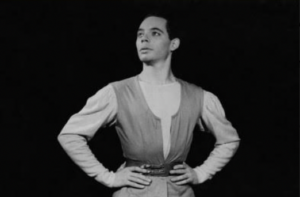
When Netflix filmed the Broadway revival of Mart Crowley’s The Boys in the Band, it commissioned a slew of special features about the genesis of the landmark play, including extensive interviews with its author. One of the most fascinating factoids to come out of Crowley’s reminiscences was that he had based the character of Harold, so memorably played originally by Leonard Frey and now by Zachary Quinto, on his best friend, Howard Jeffrey.
“Howard Who?,” some might ask. It wouldn’t be fair to call Howard Jeffrey a forgotten name since he was never particularly well-known. But as a dancer, choreographer, and later a producer, his personal and professional lives intersected with several key figures in mid-century theater and film.
Unlike so many young gay men whose families discourage them from performing, Jeffrey had a show business mother to rival Rose in Gypsy, and he was already studying at Eugene Loring’s American School of Dance in Los Angeles when, at thirteen, he was awarded a scholarship from Ballet Theatre (later American Ballet Theatre). A newspaper photograph from 1948 captured the young scholarship student surrounded by ballet luminary Lucia Chase, founder of Ballet Theatre, and star dancers Loring, Igor Youskevitch, and Margaret Craske. It was an auspicious start to a career in dance.
Jeffrey danced with Ballet Theatre while still in his teens, and made his film debut as a dancer in the 1952 Danny Kaye vehicle, Hans Christian Anderson. His career took a decided turn when he was hired as assistant to both Jerome Robbins and his co-choreographer Peter Gennaro on the original 1957 production of West Side Story. Jeffrey worked with Robbins on West Side’s many tours, conducting dance auditions and teaching its staging to Robbins’s exacting standards. He was at Robbins’s side on the show’s 1961 film version, and among his duties was to make sure its star Natalie Wood could comfortably execute Robbins’s choreography.
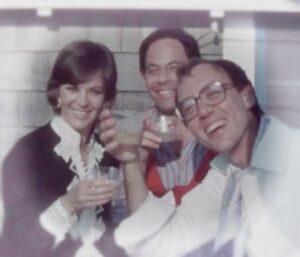
Jeffrey developed a friendship with Wood and her assistant, Mart Crowley, a young man with ambitions to write. The three became close, and according to Wood’s husband Robert Wagner, Jeffrey and Crowley were “just about the two best friends Natalie ever had.” The three-person friend group was so strong that Jeffrey and Crowley took charge of funeral arrangements when Wood was tragically killed in 1981, including the preparation of her body for burial.
His friendship with Wood also paid off in practical terms after West Side Story wrapped. Jeffrey toured as a dancer with Robbins’s Ballets: USA, but after the company disbanded he was at loose ends, living in Los Angeles and spending days and days sunning himself at the beach. In between dancing gigs on television variety shows, he took over for Crowley as Wood’s assistant.
Jeffrey would discuss his easy-going L.A. life in chatty and affectionate letters to Robbins. Jeffrey and Robbins were lovers, though the timeline of their romance is unclear. Their correspondence in the early 1960s displays a loving bond between long-time friends. Jeffrey’s skill in guiding Wood through the West Side Story choreography got him noticed by other dance-challenged female stars. “I am at the moment giving a few classes in the art of dance to Angela Lansbury,” he wrote to Robbins in October 1963. “She’s going to be in Steve and Arthur’s show, ‘Side Show,’ and she wants to get in some kind of shape. I rather enjoy it. The show sounds scary.” The “Steve and Arthur” he refers to are composer-lyricist Stephen Sondheim and librettist and director Arthur Laurents, and their “Side Show” became Anyone Can Whistle, an experimental comic musical that challenged perceived notions of sanity and civic governance. A major flop that has taken on cult status since its brief Broadway run in 1964, Anyone Can Whistle was choreographed by dancer-turned-choreographer Herbert Ross.
Ross was married to Nora Kaye, one of the great dramatic ballerinas of her generation and a Ballet Theatre star. Jeffrey and Kaye worked together during his years at Ballet Theatre, and this connection to Ross led to another major turn in his career. Hired as Ross’s assistant on Inside Daisy Clover (1965), a Natalie Wood vehicle, Jeffrey once again coached Wood in her dancing. He was Ross’s assistant when Ross was hired to choreograph a drunken dance for Elizabeth Taylor in Who’s Afraid of Virginia Woolf? (1966) and on the mammoth Doctor Doolittle (1967), again assisting Ross on the musical numbers.
Funny Girl (1968), for which Ross staged and directed all the musical sequences, introduced Jeffrey to another star who, like Wood, Lansbury, and Taylor, benefitted from his patient dance coaching. Barbra Streisand trusted him so completely that she insisted he partner her in the lavish Ziegfeld number “His Love Makes Me Beautiful.” He showed up in her next film, Hello, Dolly! (1969), and can be seen in the title number taking his arm as one of the dancing waiters. “I’m really crazy about Barbra,” he wrote to Jerome Robbins during filming. “I know she’s outrageously difficult but she’s got something that I love. I guess it wasn’t hard for you to figure I’d like her.” Robbins had much the same response to the diva when he came in to supervise the Broadway Funny Girl during its run in 1964.
His Streisand connection continued when Jeffrey provided the choreography for her next film, On a Clear Day You Can See Forever (1970). He followed it up by handling the musical staging for the perennial kids’ favorite, Willy Wonka and the Chocolate Factory (1971)––yes, he made the Oompa Loompas dance!
Jeffrey’s connection to Herbert Ross, by then a full-fledged film director, took his career in an entirely new direction. After serving as associate choreographer on the musical sequel Funny Lady (1975), once again putting Streisand through her dance paces, he went on to a variety of associate producer roles on the Sherlock Holmes romp The Seven-and-a-Half Percent Solution (1976), the ballet melodrama The Turning Point (1977), and Nijinsky (1980), a biopic of the great Russian dancer and his lover Sergei Diaghilev.
His apprenticeship with Ross complete, Jeffrey was executive producer on two Bette Midler vehicles, Divine Madness (1980) and Jinxed (1982), and Mel Brooks’s remake of To Be Or Not To Be (1983). He was sole producer of the Albert Finney modeling world thriller Looker (1981) and the TV movie There Must Be a Pony (1986), starring Elizabeth Taylor. The latter marked the first time Jeffrey worked with his friend Mart Crowley, who adapted James Kirkwood’s novel about a struggling Hollywood film star and her possibly gay son.
His producing career was in ascendance, but he was more than happy to return to the role of assistant for his old friend and mentor Jerome Robbins when Robbins was preparing a retrospective of his Broadway work. In a letter from Los Angeles in December 1987, Jeffrey was apologetic: “I don’t have to tell you how sorry I was that it couldn’t work out for me to do ‘Hit Dances.’ . . . I understand––if I lived in N.Y. it would have been great––at any rate, I am sorry and I wish you all great things from 1988 and always. P.S. If there’s anything I can do from here please let me know.”
But Jeffrey would not live to see the show that was eventually titled Jerome Robbins’ Broadway (1989). Like countless others, he was lost to AIDS and died in late 1988. His loss was acknowledged by many of the bold-faced names he worked with over the years. Barbra Streisand dedicated part of her 1991 career-spanning Just for the Record. . . multi-CD set to Jeffrey (misspelling his name); Herbert Ross dedicated his last film, Boys on the Side (1995), to Jeffrey’s memory.
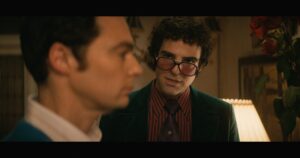
Howard Jeffrey left few traces that resonate with audiences today. His brief Funny Girl and Hello, Dolly! appearances are minor despite his behind-the-scenes dance expertise, and the films he produced are mostly forgotten. But he lives on as a character in the much-loved and discussed The Boys in the Band. It’s intriguing to try and glean clues to Jeffrey’s personality from Crowley’s characterization of Harold. Photographs of Jeffrey show a big-eyed, darkly handsome and lively young man who bears little resemblance to Harold’s description of himself as an “ugly pock marked Jew fairy.” Crowley, who self-identified as the model for Michael, the play’s self-loathing, mean-drunk central character, referred to Jeffrey as a truth-teller, someone who could and did call Crowley on his shit. And Harold does indeed read Michael to filth. But he does so not with anger and scorn, but rather with unspoken sympathy. Harold, for all his waspishness, is the more well-adjusted of the two. He knows and understands who he is in a way that Michael never will. He pays Michael the ultimate respect by telling him the truth. But most poignant in the barbed tension between Harold and Michael is their deep, abiding friendship. Their bickering is almost performative, and when the final put-down has been delivered, it’s followed by a cleansing “Call you tomorrow.”
It’s this acknowledgement of the bond of friendship that can’t be destroyed by booze or drugs or jealousy or sex that remains one of The Boys in the Band’s most resonant themes. Crowley and Jeffrey maintained that bond until the latter’s death and now Jeffrey, the dancer and choreographer and producer, lives on as a character both acid-tongued and filled with wisdom and deep understanding.
 Kevin Winkler enjoyed a career of more than twenty years as a curator, archivist, and administrator at the New York Public Library, prior to which he was a professional dancer. He is the author of Big Deal: Bob Fosse and Dance in the American Musical, Everything is Choreography: The Musical Theater of Tommy Tune, and the forthcoming On Bette Midler: An Opinionated Guide (all from Oxford University Press). He has blogged for the Huffington Post and is a MacDowell Colony fellow. Kevin is an on-camera commentator in the documentary Merely Marvelous: The Dancing Genius of Gwen Verdon.
Kevin Winkler enjoyed a career of more than twenty years as a curator, archivist, and administrator at the New York Public Library, prior to which he was a professional dancer. He is the author of Big Deal: Bob Fosse and Dance in the American Musical, Everything is Choreography: The Musical Theater of Tommy Tune, and the forthcoming On Bette Midler: An Opinionated Guide (all from Oxford University Press). He has blogged for the Huffington Post and is a MacDowell Colony fellow. Kevin is an on-camera commentator in the documentary Merely Marvelous: The Dancing Genius of Gwen Verdon.

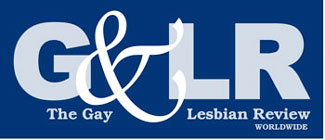
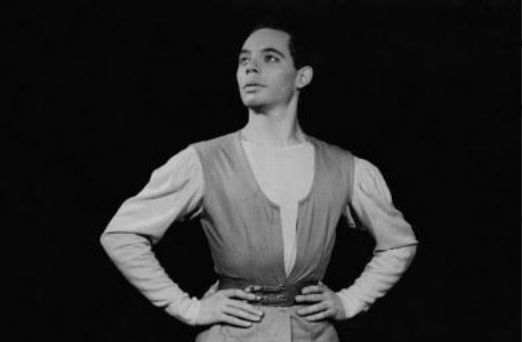


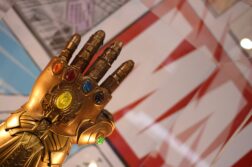
Discussion1 Comment
Kevin Winkler! We were in A Midsummer Night’s Dream together in 1978! I played Snout, the Tinker and you were our #1 fabulous dancer with the crazy neck twirling! I’m still in the business – many years as an actor, many as a director, now working with my partner on animated feature films. Hope you’re well and much fun to read about Howard Jeffrey!